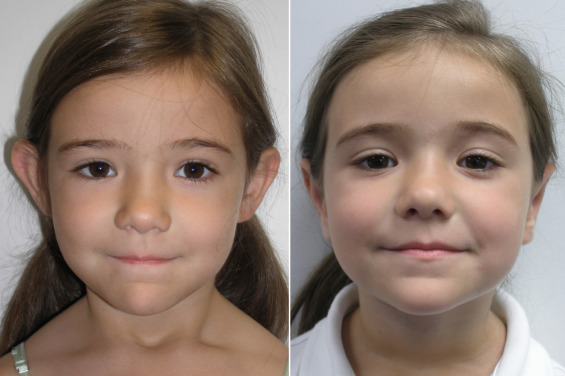Ear Reconstruction in Estonia
Search and Compare the Best Clinics and Doctors at the Lowest Prices for Ear Reconstruction in Estonia

Find the best clinics for Ear Reconstruction in Estonia
No clinics available
Israel offers the best prices Worldwide
Price: $ 14,755

- Home
- Estonia
WHY US?
At Medijump, we're making medical easy. You can search, compare, discuss, and book your medical all in one place. We open the door to the best medical providers worldwide, saving you time and energy along the way, and it's all for FREE, no hidden fees, and no price markups guaranteed. So what are you waiting for?

Free

Best Price

Widest Selection

Risk-Free
What you need to know about Ear Reconstruction in Estonia

Ear reconstruction is a surgical procedure to rebuild a damaged ear caused by trauma, accident or cancer surgery, as well as misshapen or underdeveloped ear due to a disorder present at birth (congenital). There are several types of ear reconstruction, including microtia repair (creating an ear for people with an inborn condition where their outer ears are malformed, small, or absent), otoplasty (to make the earless prominent), and ear defect repair (to restore the form and function of the outer ear after trauma, accident, or cancer surgery).
What Does the Procedure Involve?
All types of ear reconstruction can be performed under local or general anesthetic. The first stage is creating the ear, your surgeon may use your own tissue, such as cartilage or skin to reconstruct the ear or use a prosthetic. Then, the next stage is putting the ear into position, so that it appears and looks just like a normal ear would.
How Long Should I Stay in Estonia for a Ear Reconstruction Procedure?
Most people can leave the hospital on the same day as the procedure. However, adults with complex cases and children need to stay in the hospital overnight. After you are discharged, you should aim to stay in Estonia for 5 to 7 days for follow-up checkups and removal of stitches.
What's the Recovery Time for Ear Reconstruction Procedures in Estonia?
You should plan to return to work within 5-7 days if your job is not physically demanding. The total recovery time can vary from two to six weeks. Ask your doctor when you can resume your daily activities, such as exercises and heavy lifting.
What sort of Aftercare is Required for Ear Reconstruction Procedures in Estonia?
During your recovery period, you need to avoid sleeping on your side and wear a loose headband that covers your ears at night to keep pressure off your ears. Wear button-down shirts or shirts with loose-fitting collars so you do not have to pull anything up over your head.
What's the Success Rate of Ear Reconstruction Procedures in Estonia?
Ear reconstruction has a high success rate of more than 90% and most patients said the result was excellent. Although very rare, there are side effects and risks to be aware of, including infection, scarring, and blood clots. Some people may not be satisfied with the result because the ear placement is asymmetrical or overcorrected, in this case, consult with your surgeon about the possibility of revision surgery.
Are there Alternatives to Ear Reconstruction Procedures in Estonia?
Although ear reconstruction is the best option for ear deformity, those who are not able to undergo this procedure can opt for an alternative which is prosthetic ears, which involves inserting titanium pins into the skull to clip the prosthetic ears.
What Should You Expect Before and After the Procedure
Before an ear reconstruction surgery, you may have a birth defect that made your ear malformed or absent, your ears may stick out too far from too much, or too large in proportion to your head. After an ear reconstruction surgery, you will notice a change in the appearance of your ears immediately. The changes are permanent and natural.
Whilst the information presented here has been accurately sourced and verified by a medical professional for its accuracy, it is still advised to consult with your doctor before pursuing a medical treatment at one of the listed medical providers
No Time?
Tell us what you're looking for and we'll reachout to the top clinics all at once
Enquire Now

Popular Procedures in Estonia
Prices Start From $370

Prices Start From $28

Prices Start From $167

Prices Start From $120

Recommended Medical Centers in Estonia for procedures similar to Ear Reconstruction

- Interpreter services
- Translation service
- Religious facilities
- Medical records transfer
- Medical travel insurance
- Health insurance coordination
- TV in the room
- Safe in the room
- Phone in the room
- Private rooms for patients available

- Interpreter services
- Translation service
- Religious facilities
- Medical records transfer
- Medical travel insurance
- Health insurance coordination
- TV in the room
- Safe in the room
- Phone in the room
- Private rooms for patients available

- Interpreter services
- Translation service
- Religious facilities
- Medical records transfer
- Medical travel insurance
- Health insurance coordination
- TV in the room
- Safe in the room
- Phone in the room
- Private rooms for patients available

- Interpreter services
- Translation service
- Religious facilities
- Medical records transfer
- Medical travel insurance
- Health insurance coordination
- TV in the room
- Safe in the room
- Phone in the room
- Private rooms for patients available

- Interpreter services
- Translation service
- Religious facilities
- Medical records transfer
- Medical travel insurance
- Health insurance coordination
- TV in the room
- Safe in the room
- Phone in the room
- Private rooms for patients available
Ear Reconstruction in and around Estonia
Introduction
Estonia is a country situated on the eastern coast of the Baltic Sea in Northern Europe. Tourism in this country is often overlooked, but those who have visited agree that the country is filled with historical wonders and hidden attractions. Today, Estonia has become a popular medical tourism destination, with a growing number of people coming from Sweden, Finland, Norway, and the UK. Foreign patients usually come for orthopedic, weight loss, or plastic surgery. What attracts medical tourists to have their treatment in Estonia is the country’s affordable and high-quality healthcare. With skilled surgeons, excellent medical centers, and incredible vacation opportunities, it is easy to see why Estonia is becoming more and more popular. Many of the board-certified surgeons in the country continue their training abroad and the private hospitals are armed with advanced technology.
Popular Cities and Regions in Estonia
The capital of Estonia is Tallinn and it charms visitors with its lively yet peaceful vibe, UNESCO-listed Old Town, photogenic sights, ancient churches, and medieval streetscapes. The city is perfect for those looking for some relaxation and pampering as it has a number of Day Spas. In addition, Tallinn is filled with delightful food and vibrant modern culture, making it the perfect place to visit. Besides Tallinn, another popular place to visit is Tartu, which is the second-largest city in the country. As a premier university town, this city is the place where Estonian doctors and surgeons study medicine. Tartu is a very historic city and also has a vibrant nightlife.
Transport in Estonia
Tallinn International Airport is the largest airport in Estonia that serves flights to and from major cities in Europe and the Middle East, such as London, Copenhagen, and Dubai. Getting around Estonia can be done by bus or train. While the rail network is limited and affordable, buses are fast and efficient. Big cities in the country have an efficient public transportation system and taxis are widely available. It is also worth pointing out that the whole country is bicycle-friendly.
Visas in Estonia
Since Estonia is a member state of the Schengen Area, holders of passports from 62 countries, including the US, the UAE, Japan, and Australia can enter without a visa for up to 90 days. Other countries not listed in the visa waiver agreement need to apply for a Schengen visa to enter.
Weather in Estonia
The summer months of June to August have the highest temperatures, with sunny and long daylight days. Spring (March to May) and autumn (September to October) is a great time to visit the country as the weather is very pleasant. Winter, from November to February, can be freezing as the temperatures plummet and the snow starts to fall. The weather in this country is very changeable.
Additional Info
- Local Currency: Estonia adopted the Euro (EUR) in 2011. 1 EUR is approx. 1.08 USD.
- Money & Payments: ATMs can be found in all cities and credit cards are widely accepted. Tipping is expected.
- Local Language: The official language is Estonian but Russian and English is widely spoken. Some people in the country also speak Finnish and German.
- Local Culture and Religion: More than half of Estonia’s population is non-religious. The religious population is mainly Christian.
- Public Holidays: Estonia celebrates various public holidays, including Independence Day, Good Friday, Easter Sunday, Spring Day, Pentecost Sunday, Victory Day, Independence Restoration Day, and Christmas Day.
Popular Searches
- Plastic Surgery in Thailand
- Dental Implants in Thailand
- Hair Transplant in Thailand
- Breast Augmentation Thailand
- Gastric Sleeve in Thailand
- Gender Reassignment Surgery in Thailand
- Laser Hair Removal in Bangkok
- Botox in Bangkok
- Dermatology in Bangkok
- Breast Augmentation in Bangkok
- Coolsculpting in Bangkok
- Veneers in Turkey
- Hair Transplant in Turkey
- Rhinoplasty in Turkey
- Stem Cell Therapy in Mexico
- Rhinoplasty in Mexico
- Liposuction in Mexico
- Coolsculpting in Tijuana
- Rhinoplasty in Korea
- Scar Removal in Korea
- Gastric Sleeve in Turkey
- Bone Marrow Transplant in India
- Invisalign in Malaysia
- Plastic Surgery in the Dominican Republic
- Tummy Tuck in the Dominican Republic
- Plastic and Cosmetic Surgery in Poland
- Rhinoplasty in Poland
- Hair Implant in Poland
- Dental Implants in Poland
- IVF in Turkey